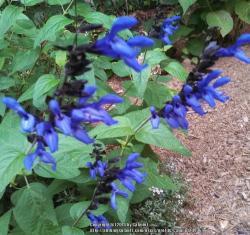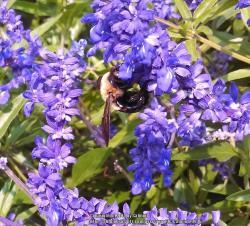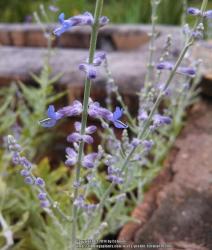1) Salvias and Agastaches are easy to grow and are well-adapted for local climates in the Americas.
The majority of Salvias and Agastaches are native to the Americas. Native plants are typically well-adapted to local climates, making them easy to grow and care for. Generally sun-loving plants, various Salvia and Agastache species are native to different regions of the continent. Some (e.g., Salvia apiana and Agastache rupestris) grow well in the hot, dry climates of the southwestern United States and Mexico and are tender perennials in colder climes of North America. Others (e.g., Agastache cusickii) are native to mountainous regions of the Northwestern U.S. and Canada. Agastache species are generally more cold-hardy than native Salvias. Some popular non-native Salvias (e.g., Salvia nemorosa and Salvia x sylvestris) do well in temperate areas. Look for species that are known to do well in your region, and you will have beautiful plants that are typically drought-tolerant and produce abundant blossoms with little extra care.


2) The pollinators love them.
Salvias and Agastaches are pollinator magnets. Both Salvias and Agastaches attract butterflies, and Agastache has special value to bumble bees, honey bees, and native bees, especially longhorned, small resin, and leafcutter bee species. Honey bees make a light, fragrant honey from the purple blossoms of Agastache foeniculum (Anise hyssop). Agastache foeniculum also attracts beneficial insects to the garden, such as bee flies and soldier beetles, which help keep common garden pests in check without the use of toxic chemicals. Finally, Salvia is known for attracting hummingbirds, with the red, tubular blossoms of Salvia elegans (Pineapple Sage) being a particular hummingbird favorite. Anyone interested in attracting hummingbirds, butterflies, bees, and other pollinators should include Salvias and Agastaches in their garden plans.


3) Salvias and Agastaches have a long history of culinary, medicinal, and other beneficial uses.
Both Salvias and Agastaches can be used for culinary, medicinal, and other purposes. The leaves of A. cana and A. foeniculum can be crushed and used in teas. S. apiana and S. hispanica both produce edible, highly nutritious seeds. The seeds of A. hispanica (or Chia) are especially rich in omega-3 fatty acids and also contain fiber, protein, calcium, phosphorus, and manganese. Several Salvia and Agastache species have a long history of use in traditional Native American medicine, including A. foeniculum and A. pallidiflora (cough, fever, wounds), S. apiana (healing and strength following childbirth), and S. elegans (anxiety and hypertension). Salvias and Agastaches have also been used in Native American ceremonial rituals (S. apiana and A. pallidiflora), as a mosquito repellant (A. cana), and as an aromatic in potpourris. Salvias and Agastaches are also excellent choices for gardeners looking for deer-resistant and drought-tolerant plants.
In sum, Salvias and Agastaches are beautiful additions to the garden that are easy to grow, attract the pollinators, and also provide culinary and other benefits. Gardeners interested in creating butterfly, bee, and hummingbird habitats, as well as those interested in growing herbs and in conserving water use through xeriscapic gardening, will all find particular value in Salvias and Agastaches. However, their abundant blossoms and low maintenance make them an attractive choice in any garden.


| Thread Title | Last Reply | Replies |
|---|---|---|
| Hyssop by miette2 | Oct 5, 2015 5:18 PM | 2 |
| Pollinators by LindaTX8 | Sep 18, 2015 6:55 PM | 1 |